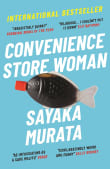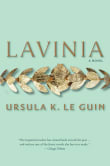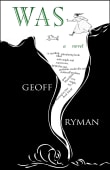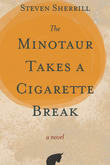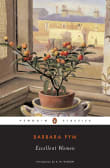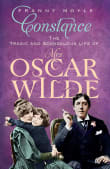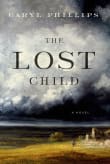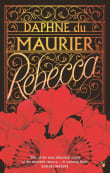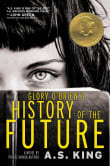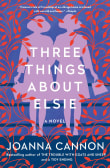Wide Sargasso Sea
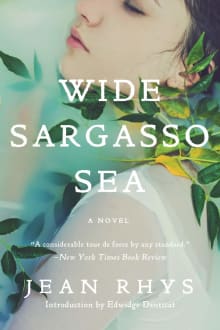
Book description
Wide Sargasso Sea, a masterpiece of modern fiction, was Jean Rhys's return to the literary center stage. She had a startling early career and was known for her extraordinary prose and haunting women characters. With Wide Sargasso Sea, her last and best-selling novel, she ingeniously brings into light one of…
Why read it?
11 authors picked Wide Sargasso Sea as one of their favorite books. Why do they recommend it?

"Wide Sargasso Sea" is a great work of modernist fiction, with a light, stream-of-consciousness style and an unflinching eye turned on the realities of a woman's experience in 19th Century Jamaica. It's an underrated masterpiece.

This is probably the most powerful example of literary pastiche novels I’ve read, not just because it takes on one of the most beloved novels in English literature—Jane Eyre—but because it brutally turns that novel’s premises on their gentrified heads.
I am truly awed by how vibrantly Rhys inhabits Antoinette, Rochester’s doomed wife, weaving in themes of colonialism and gendered power into Charlotte Brontë’s Gothic romance and, in the process, making it a kind of subversive and gritty feminist and anti-colonial manifesto.
Rhys’s depiction of Antoinette’s descent into madness is so visceral and believable that you are (or…
From Jennifer's list on badass madwomen.

If you appreciate stories that keep you off-balance, this novel is as suspenseful and flashback-inducing as any thriller or halfway-decent horror movie. Set in two lands of relentless social oppression, the novel unfolds a haunting, many-layered story of madness, betrayal, and abandonment.
As a poet, I found its language astounding and its structure uniquely moving. Partly because I trained as a sociologist, I can imagine that its portrait of cultural collision is as compelling as anything I could read about the Creole Caribbean and English societies that it's set in.
Much more than a book about colonialism, sexism, or racism,…
If you love Wide Sargasso Sea...

I knew about this Jane Eyre prequel for some time before reading it—reluctant perhaps to challenge my love for the Victorian romance. But I needed to understand the madwoman. What was her reality?
In Rhys’ book I encounter her in Jamaica, as Antoinette, Creole daughter of a former slaveholder. As a child she is traumatized by racial violence and family tragedy. Then Rochester comes to her island for an arranged marriage, predicated on possession of her inheritance.
When he feels threatened by a culture he doesn’t understand, he decides to crush Antoinette, even changing her name to Bertha just because…
From Deborah's list on startling encounters with mental illness.

Bertha, the murderous maniac in the attic, scared me out of my skin the first time I read Jane Eyre. Not the most promising subject for a sympathetic imaginary biography, you might think; but Jean Rhys draws on her own Creole youth to create a past for the madwoman, the charming but doomed child Antoinette, who grows into a beautiful young bride. Her exotic and magical island setting glows with lush abundance, but from the first there is a sense of foreboding. Her marriage fails, and the innocent, touching young woman is torn from her adored island, losing her…
From Maya's list on breathe new life into old stories.

Many people are familiar with Charlotte Bronte’s Jane Eyre and her mad woman in the attic. Wide Sargasso Sea, written as a prequel to Jane Eyre, turns this on its head and lends another perspective to the Victorian mad woman trope. Throughout this novel, I couldn’t help but ask myself what constitutes madness. How much of what we think of mental illness is societally determined? As we grow up and conform to society's expectations, are those that refuse to completely conform considered “mad?”
From Anna's list on exploring the transitions through life.

Rhys reimagines Brontё’s classic Jane Eyre in a post-colonial, feminist light with this prequel. With this reimagination comes a deeper dive into Antoinette (aka Bertha) and her backstory. A metamorphosing sociopoliticial landscape makes the identity conflicts of her mixed-race more acute, and these paired with the pressures of pleasing her husband (Rochester) take a toll on her mental health. All the while, Rhys integrates elements of obeah spiritual practice to create an underlying, expanding enchantment in the novel. Wide Sargasso Sea deconstructs the “madwoman in the attic” trope and returns her humanity by giving her voice. We get something richer…
From Caroline's list on with uncommon female voices and a sci-fi twist.

An iconic prequel to Charlotte Brontë’s Jane Eyre that recreates a backstory for the first Mrs. Rochester. In Wide Sargasso Sea, Jean Rhys presents the life of Antoinette Cosway, a beautiful Creole heiress, who marries Edward Rochester of Thornfield Hall, England. Set amidst the fallout of the 1833 Emancipation Act, the legislation that decreed the freedom of all slaves in the British colonies, Rhys presents Antoinette’s troubling marriage from her point of view, showing how she is inexorably driven towards madness. Exploring the complexity of power in relationships alongside the themes of race, identity, and colonialism, Rhys’s beautiful masterpiece…
From Claire's list on Brontë sequels, prequels, spin-offs and biographies.

In Wide Sargasso Sea, Jean Rhys takes up the story of the ‘mad’ first wife of Mr. Rochester in Charlotte Brontë’s Jane Eyre. Rhys asks readers to reconsider the circumstances that left this much caricatured literary figure languishing in her husband’s attic, thereby reminding them of the shocking ease with which ‘difficult’ individuals could once be hidden away. It’s an issue that particularly interests me since one of the women I write about in my most recent book, Georgina Weldon, narrowly escaped being incarcerated by her husband for supposed insanity. Rhys’s fictional story is sadder than Weldon’s, and…
From Emily's list on that sing the praises of unsung women.

Technically Bertha Mason is not a monster, but in Jane Eyre, she is called not only “monster” but “goblin,” “vampyre,” and “clothed hyena.” Jean Rhys, who knew a thing or two about not belonging, explores the deterioration of the Jamaican-born, Creole beauty, Antoinette Cosway, into Bertha Mason, Thornfield Hall’s notorious “madwoman in the attic.” It is a harrowing story of hypocrisy and the dismantling of a passionate, intelligent woman for the sin of not being quite “us.”
From Maria's list on stories told by monsters.
Want books like Wide Sargasso Sea?
Our community of 12,000+ authors has personally recommended 100 books like Wide Sargasso Sea.


